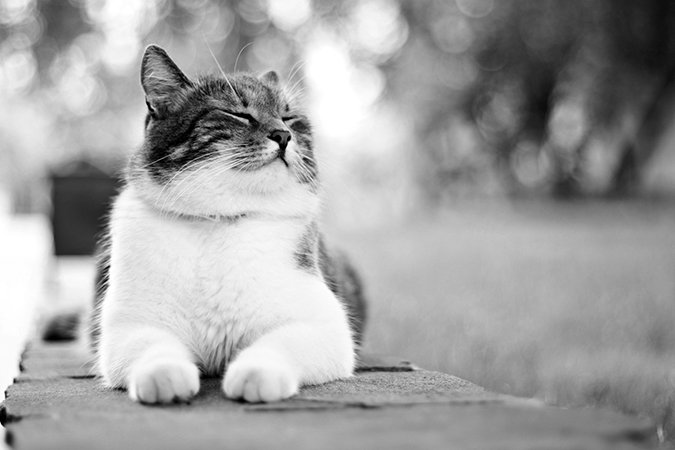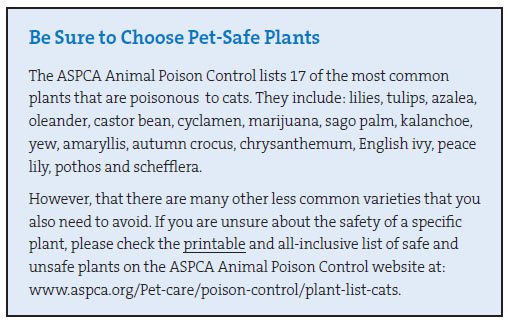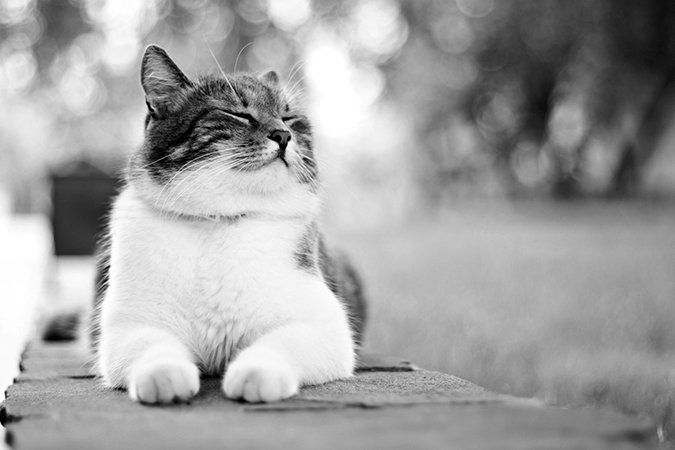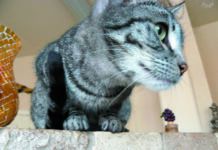THINKSTOCK


You may still be shoveling snow off the walk, or cuddling near the fireplace soon after the sun goes down. But spring is just around the corner, and now is a good time to think about your warm weather goals while you still have some time to plan. For instance, maybe you’re thinking about how to enhance your outdoor environment for your pets, or considering growing some indoor herbs that are fragrant and cat-friendly.
In either case, compromise is key when it comes to cats and gardens. By offering a safe feline garden, you can often take away the temptation for your cat to dig and chew plants in your garden and even your home.
Take a lesson from Lizzy Shannon, a science fiction author who lives in Portland, Oregon. In addition to her garden, she also grows catnip for her five cats, Grilka, Harley, Killashandra, Shadow and Molly. “I grow catnip on the deck and also inside my home in little pots,” says Shannon. “My cats are allowed onto the deck, which is enclosed. If the catnip isn’t crushed, they won’t bother with it, but they’ve learned to crush it themselves by rolling on it and then they go back and eat it. They are fun to watch.”
Indoor cat gardens can provide plenty of stimulation for a bored, house-bound cat — plus they give cats something safe to snack on instead of some houseplants that can be dangerous to cats.


Outdoors or indoors?
Planning a cat garden can be challenging, especially if your cat lives strictly inside or if you live in an apartment with no yard. If you’re planning on creating an indoor garden, you will need to buy planters and fill with organic dirt (to avoid pesticides and dangerous fertilizer).
If you’re going to design an outdoor garden, you should either use planters or choose an area that has not been sprayed with pesticide or other contaminants. The size of the garden should be proportioned to the number of cats. For example, if you live with one or two cats, a planter or two of greens should suffice.
If you’re planning on creating an outdoor garden, make certain that you have a clear path to the indoors so your cat can come inside when she chooses. That way, she’s not at the mercy of the elements and can get food and water as required. (Installing a cat door with a way to close up while you’ve gone out and also at night is one solution.)
Lastly, if you wish to grow plants such as catnip or catmint outside and bring it in for a tasty treat, that’s good, too. That way, your cat can enjoy the herbs without destroying them by digging in the garden.
Opt for simple or elaborate
Your cat garden can be as elaborate or as simple as you care to make it. You should have a water source where your cat can drink — either a bowl of fresh water or a fountain — and plenty of spots for sun and shade. If you can, put up some freestanding posts for climbing and scratching to mimic trees. Your cat will be more likely to use the garden if it features a variety of things to keep her busy.
Container gardens are particularly attractive for those who live in apartments, have limited space or who may not want the fuss and bother of a full-on garden. Plus, there is a bonus to having a container garden — you can bring your greenery indoors when the weather gets cold to maintain a cat garden year round.
Most people who have container gardens tend to stick with one or two plants, but there’s no reason why you couldn’t have more if space permits. An added bonus for those who grow herbs: They provide a wonderful aroma to the home.
Be aware that many of these plants — especially catnip and catmint — grow fast and can take over your garden quickly. Additionally, not all cats like all plants, so you may need to experiment.
“I have one cat who couldn’t care less,” says Shannon. “They never fight over the catnip — they all take turns over it. They never bat anyone away. It’s usually in pecking order first to last, except Harley, who seems to be last. I think it’s healthy for their well-being because they like the stimulus and they can have something to do. It keeps them from going crazy and helps establish the pecking order.”
However, experts advise cat owners to select garden plants — and dirt — carefully. Many garden centers carry cocoa bean mulch, which is highly toxic to dogs and cats if ingested. Our advice: Skip the mulch and use plain dirt to be on the safe side.




